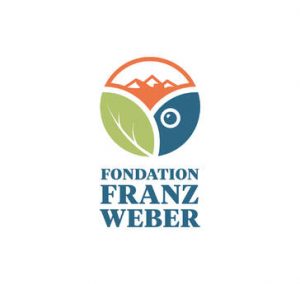Guest contribution by Dr. Nikolas Sellheim.
Introduction
On 23 July 2021 the United Nations General Assembly (UNGA) adopted Resolution A/75/L.116 ‘Tackling illicit wildlife trade‘. The resolution is the fifth resolution of the UNGA after resolutions in 2015, 2016, 2017and 2019 on this very issue. While the underlying narrative is essentially the same – i.e. the protection of biodiversity through the combatting of illegal wildlife trade – the present resolution sounds significantly more dramatic than its predecessors. Moreover, it makes zoonotic diseases a key component.
In this post, I present some background on the illegal trade in wildlife and in how far the recent UN resolution may be considered an appropriate response to this threat to biodiversity. Special attention is being paid to the role of the Convention on International Trade in Endangered Species of Wild Fauna and Flora (CITES) in the resolution.
The illegal wildlife trade
Illegal wildlife trade has long been a concern for CITES parties and other national and international agencies. It is estimated that the illegal trade in wildlife generates less revenue than the trade in narcotics, but that it far exceeds the trade in arms (Gillespie, 2011, p. 196). It is currently estimated that it amounts to around 20 billion US dollars per year (UNEP-INTERPOL, 2016). That said, the illicit trade in wildlife is not steady and is subject to boom and bust cycles, relating to the way the international community politically and legally responds to certain developments.
The latest World Wildlife Crime Report of the UN Office on Drugs and Crime provides some key data on the truly global nature of illegal wildlife trade:
| – Nearly 6,000 species have been seized between 1999-2018 – No single species is responsible for more than 5 per cent of the seizure incidents – Illegal wildlife trade includes virtually every country in the world – No single country is identified to be the source of more than 9% of all seizures – Suspected traffickers hold citizenships from more than 150 countries |
UNODC, 2020, pp. 9-10.
The taxonomic categories of seized species paint yet another interesting picture on the trade:

When taking into account the shares of seizures and the overall contributions of species to the market, it needs to be borne in mind that also market composition is not static. As the report outlines, between 2009-2013, rosewood species were dominant while agarwood, pangolins and rhino horns were ranging at around 4-5,5%. This changed, however, when the prices for rosewood and agarwood declined, thereby diminishing their share of the overall markets. This meant that the importance of pangolins and rhino horn rose accordingly (UNODC, 2020, p. 10).
| 2009-2013 | 2014-2018 | |
| Rosewood | 40,7% | 31,7% |
| Elephant | 33,1% | 30,6% |
| Rhinos | 5,5% | 11,8% |
| Pangolins | 4% | 13,9% |
| Assorted reptiles | 4,3% | 3,6% |
| Agarwood | 4% | 0,6% |
| Corals | 1,6% | 0,6% |
| Tortoises & fresh water turtles | 0,9% | 0,3% |
| Parrots | 0,9% | 0,6% |
| Big cats | 0,6% | 0,8% |
| Sturgeon | 0,1% | 1,7% |
| Raptors | 0,1% | 0,4% |
| Marine turtles | 0,1% | 0,2% |
| Eels | 0,1% | 0,1% |
| Other species | 4,1% | 3,1% |
Shares of species 2009-2013 and 2014-2018, table adapted from UNODC, 2020, p. 11
The large amount of illegally traded wildlife species and produce are also connected to the legal trade. This means that legal markets can be used to ‘wash’ illegally obtained wildlife products. This is especially the case in illegally obtained rosewoods or European eels, which are fairly easily being integrated in the legal trade. This gives traffickers good opportunities to have access to a much broader range of customers, enabling them to maximise their profits. Quite generally, however, the legal and illegal markets remain relatively distinct.
While that may be so, the so-called ‘wet’ markets for illegal wildlife species, i.e. markets that can be found in back alleys and on city streets, which have been the focus of attention for anti-trafficking agencies, cannot account for the large volumes of illegally obtained wildlife, since their size is simply too small. Instead, highly specialised traffickers use existing pathways to channel their produce to their customers (UNODC, 2020, p. 12).
International responses to the illegal wildlife trade
Generally speaking, the combatting of illegal wildlife trade has not been ranging overly high on the international agenda. The reason for this can be found in different national legislation, lack of funding and insufficient enforcement agencies. Indeed, enforcing also CITES provisions has proven to be a very challenging issue since not all CITES parties adhere to the same standards (Wyatt, 2021).
Since the illegal wildlife trade is of such large scale, INTERPOL has formed a Wildlife Enforcement team that “helps to to disrupt and dismantle transnational organized criminal networks involved in the illegal wildlife trade.” In several projects, trafficking pathways for specific species, people behind the illegal wildlife trade and associated coordination of the work of border, customs and environment officials occurred.
Of course, also CITES plays a role in this context. It must be highlighted, however, that the focus of CITES lies on the international dimension of wildlife trade and the fact that it refers only to the regulation of this trade. It does not tackle issues such as poaching and domestic elements of illegal wildlife trafficking. Since this is the case, five intergovernmental organisations have come together in 2010 to start the International Consortium on Combating Wildlife Crime (ICCWC). The ICCWC consists of the CITES Secretariat, INTERPOL, UNODC, the World Bank and the World Customs Organization (WCO). The five focus areas of ICCWC are:
- Provide institutional support and strengthen cooperation
and coordination - Facilitate analysis of national capacity to strengthen law enforcement responses and help guide investment
- Develop or enhance criminal justice and preventive capacity across institutions
- Increase awareness and support for measures to combat wildlife and forest crime
- Expand the use of knowledge, technology and innovation
Under these five pillars and as per its Strategic Programme 2016-2020, the ICCWC is currently implementing 21 concrete activities as well as 57 sub-activities to reach its goals. A Strategic Vision 2030 is currently under development.
The response of the United Nations
As mentioned in the Introduction, the UN responded to illegal wildlife trade all in all in five resolutions. The first one was only adopted in 2015. A common thread that spans throughout all resolutions is the reaffirmation of the intrinsic value of biodiversity and its contribution to sustainable development and human wellbeing. Further, the resolutions consider biodiversity as an irreplaceable part of the natural systems which should be conserved for the generations to come. In all resolutions concern over the increasing level of poaching and illegal trade with its adverse economic, social and environmental impacts is expressed. These issues can be found as the opening paragraphs of the resolutions. In the resolution from 2019 and 2021, a general concern over the high-level of species decline as identified by the recent report of the Intergovernmental Science-Policy Platform on Biodiversity and Ecosystem Services (IPBES) can also be found.
The basis of the UN’s response to its concerns constitutes the resolution from 2015. Here, several elements are considered crucial in tackling illicit wildlife trade. UN Member States are inter alia requested
- to adopt effective measures to adopt effective measures to counter poaching and the illegal wildlife trade, also in recourse to CITES, and to review and amend existing legislation in this regard,
- to strengthen national legislation to prevent, combat and eradicate the illegal trade in wildlife and to make illicit wildlife trade a serious crime,
- to harmonise judicial, legal and administrative regulations in order to ease the exchange of evidence concerning illegal wildlife trade and to establish inter-agency wildlife task forces,
- to raise awareness concerning illegal trade in wildlife
- or to make use of existing international organisations, such as UNODC or the ICCWC.
For the purposes of this blog, a crucial ‘encouragement’ found in the resolution is the finding of alternative livelihoods for communities that are affected by illicit wildlife trade and its adverse impacts. While this top-down element is certainly important, an arguably more important point is the “full engagement of the communities in and adjacent to wildlife habitats as active partners in conservation and sustainable use, enhancing the rights and capacity of the members of such communities to manage and benefit from wildlife and
wilderness” (see para. 8). In other words, at least since 2015 also the illicit wildlife trade is linked with the notion of indigenous peoples and local communities as wardens of the biosphere. More importantly, however, t the principle of sustainable use is underlined by the the fact that indigenous peoples and local communities (IPLC) should also have a strengthened right to benefit from wildlife and biodiversity. This stands in rather stark contrast to the currently developing discourse, especially under CITES, where IPLC have to struggle for their rights to be recognised (e.g. Sellheim, 2020).
The resolution from 2016 does not provide any new guidance as to how to implement the calls from 2015. Instead, the UNGA merely reaffirms its commitments outlined in 2015, including the strengthening of CITES. Interestingly, the 2016 resolution refers to yet another resolution from the same year, namely by UNEP. The UNEP-resolution, however, essentially echoes the contents of the UNGA’s 2015 and does not provide more concrete insights or guidance, with the exception that illicit wildlife trade also may have negative impacts on public health (see 7th preambular paragraph).
The tone somewhat changed in the 2017 resolution. Here, the 3rd preambular paragraph expresses the concern over the
“extraordinarily detrimental levels of rhinoceros poaching and the alarmingly high levels of killings of elephants in Africa, as well as the illegal trade in other protected wildlife species, including but not limited to reptiles, tortoises, marine and freshwater turtles, sharks, ornamental fish, pangolins, great apes, parrots, raptors, the helmeted hornbill and big cats,
which threaten those species with local extinction and, in some cases, with global
extinction.”
The first sentences of this paragraph are indeed very alarming, seemingly warranting a strong reaction by organisations such as CITES, i.e. the complete by of international trade in elephant products and thus a listing of Appendix I. The paragraph neglects, first, that not all over Africa elephant poaching levels and elephant conservation statuses are the same and, second, that, because of this, the elephant populations of Botswana, Namibia, South Africa and Zimbabwe are listed on Appendix II. This means that international trade in elephant products from these countries’ elephant populations is legal.

As the latest UNDOC report makes clear, poaching levels are particularly high in Tanzania, where it has contributed to a massive decline in elephant populations between 2006-2015 (UNODC, 2020, p. 48). An alarming paragraph such as the above rather contributes to the confusion than providing for solutions. It therefore comes as a surprise that the same paragraph can also be found in the 2019 and 2021 resolutions (in both instances the 6th preambular paragraph).
Essentially, the 2017 resolution as well as its 2019 successor mirror the contents from 2015. This occurs in a somewhat more detailed manner – or at least including more policy recommendations, such as the call to make sure that legal markets are not used to mask illegal markets. In order to do so, these markets for ivory should be closed if their contribute to poaching or illegal trade (para. 21). In 2019 as well as in 2021 these calls have been repeated, whereas in 2021 it was extended to include the closure of markets for commercial trade in tiger and other Asian big cat specimens (para. 31).
A major addition in the 2021 resolution refers to zoonotic diseases. Preambular paragraphs 8-13 explicitly deal with this issue and other issues on human and animal health related to illicit wildlife trade. A clear cause-and-effect relationship is consequently being established (illicit wildlife trade is a contributor to zoonotic diseases) thus necessitating stronger efforts to curb this trade. While this merely concerns the illegal trade, calls are growing louder that focus on the curbing of trade in wild animals in general. These calls are backed up by a number of scientific publications that establish a link between wildlife trade an zoonotic diseases such as COVID-19 (e.g. Aguirre et al, 2020 or Borsky et al, 2020).
Also CITES has responded to this issue by forming a working group on CITES’ role in reducing zoonotic diseases (see CITES, 2021). In this working group, also CITES parties such as Israel as well as NGOs openly call for a closure of markets for international trade in animal species in order to avoid pandemics in the future. A primary argument is that the economic costs of a pandemic far outweigh the economic benefits of trade in wild animals. How this is reconcilable with the UN’s call for enhancing the rights of IPLC to benefit from wildlife – again emphasised again in paragraph 27 of the 2021 resolution – remains in the dark. It rather appears as if a closure of markets for wild animals is ideological rather than pragmatic.
After all, the 2021 resolution does not go that far. Again, IPLC rights are to be enhanced and they are to be included in the conservation strategies of UN Member States. This, however, could stand in stark contrast to the role it ascribes for rangers whose role is to be recognised in the fight against illicit wildlife trade (see para. 17). How problematic this ‘militant conservation’ can be for IPLC was recently exposed by Buzzfeed on the role of rangers in the forceful relocation, harassment, torture and murder of local people (Warren & Baker, 2019).
It can only be hoped that a learning process has occurred in that regard. This might actually be the case: for the first time since the UN has picked up on the issue of illicit wildlife trade, the current resolution recognises:
“the importance of research to understand the root causes of poaching and illegal harvesting of timber, as well as market drivers, including the risks of increased poaching due to financial losses, especially declines in tourism and associated revenues, faced by origin countries in the context of the COVID-19 pandemic, and the need to tailor research to the specific drivers of the illegal use of a species or product and to invest in tools, data analysis and funding to tackle demand for illegal wildlife products based on evidence and built on best practice;” (para. 19).
In my view, this constitutes a major step forward that allows for a significantly more comprehensive understanding of the problems at hand. To merely blame poachers and illegal traffickers neglects the larger problems of economic hardships, biodiversity loss and the abandonment of livelihoods. That said, closure of legal markets might not be the solution and might even aggravate the problem of poaching.
Summary and conclusion
The above presents some broader overviews of the inherently complex issue of illicit wildlife trade. It can be concluded that the most recent UN resolution has not tightened the UN’s grip on illegal trade, but rather adds more complexity to the issue by inserting zoonotic diseases and by broadly spreading complex truths in a simplistic manner (re: elephant killing). It furthermore includes potentially contradictory paragraphs – at least with regard to the livelihoods of indigenous peoples and local communities.
In all resolutions, CITES plays a vital role and its importance in the tackling of illicit wildlife trade is underlined. But the difficulties of implementing CITES provisions or ways to improve CITES implementation and compliance are nowhere mentioned. While this may not be the right place to do so, it nevertheless demonstrates that the resolutions are shaped more by idealistic and political ambition rather than by the will to create blueprints for effective tackling of illicit wildlife trade. In that sense, the UN has not stepped up its game to effectively work against illegal wildlife markets.
References
- Aguirre, AA., R. Catherina, H. Frye & L. Shelley (2020). Illicit Wildlife Trade, Wet Markets, and COVID-19: Preventing Future Pandemics. World Medical Health and Policy. https://doi.org/10.1002/wmh3.348
- Borsky, S., H. Hennighausen, A. Leiter & K. Williges. (2020). CITES and the Zoonotic Disease Content in International Wildlife Trade. Environmental and Resource Economics 76: pp. 1001–1017.
- CITES. (2021). Notification to the Parties, No. 2021/009. Intersessional decision-making of the Standing Committee. https://cites.org/sites/default/files/notifications/E-Notif-2021-0009.pdf .
- Gillespie, A. (2011). Conservation, biodiversity and international law. Cheltenham: Edward Elgar.
- Sellheim, N. (2020). The Evolution of Local Involvement in International Conservation Law. Yearbook of International Environmental Law 28.
- UNEP-INTERPOL. (2016). The rise of environmental crime: A growing threat to natural resources, peace, development and security. Nairobi: UNEP. https://www.interpol.int/en/content/download/5099/file/UNEP-INTERPOL%20Report%20The%20Rise%20of%20Environmental%20Crime.pdf
- UNODC. (2020). World Wildlife Crime Report. Trafficking in protected species. Vienna: UNODC.
- Warren, T. & KJM Baker. (2019). WWF Funds Guards Who Have Tortured And Killed People. Buzzfeed, 4 March 2019. https://www.buzzfeednews.com/article/tomwarren/wwf-world-wide-fund-nature-parks-torture-death.
- Wyatt, T. (2021). Is CITES protecting wildlife? Assessing implementation and compliance. Abingdon: Routledge.
Contact Nikolas Sellheim: [email protected]



